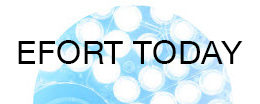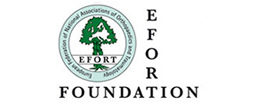EPOS-EFORT Instructional Course I, 18-20 May 2011, Vienna, Austria Children’s
Orthopaedics: Focus on Education
Bjarne MØller-Madsen, MD DMSc, Clinical Professor of Children’s Orthopaedics, Aarhus University Hospital, Denmark, on the new “BAT” format of the EPOS-EFORT Educational Program and the upcoming Instructional Courses on Children’s Orthopaedics in Vienna.
Professor MØller-Madsen, on May 18 to 20, the first-ever EFORT (European Federation of National Associations of Orthopaedics and Traumatology) – EPOS (European Paediatric Orthopaedic Society) instructional course “Basic Course I” on children’s orthopaedics will be held, followed by the “Trauma Course” on October 12 to 14, and the “Basic Course II” in spring 2011. All three are taking place in Vienna. What is the idea behind this new postgraduate training program and what audience are you aiming at?
Prof. MØller-Madsen: Our vision is quite obvious: education is an indispensable investment in our future. In medicine, it is of virtually essential importance since its quality is crucial for the degree of public health to be achieved in the EU. EPOS, in cooperation with EFORT, actualizes an integrative concept of postgraduate training, aiming at two different specialized target groups and taking into account the growing need for a reliable, common educational standard among doctors of the same speciality throughout the European Union.
What does “BAT” stand for?
Prof. MØller-Madsen: The acronym means “Basic – Advanced – Trauma”, summarizing the three different types of courses we are offering. Thus, the “Basic Course I”, “Basic Course II” and “Trauma Course” comprise the core curriculum for children’s orthopaedics that is required for the EBOT exam, the annual test offered by the European Board of Orthopaedics and Traumatology. This exam, open to orthopaedic surgeons of all EU countries, plus Norway and Switzerland, who are already fully certified by their national authority, is not yet officially acknowledged by Brussels. But we hope that in the years to come it will be a valid qualification for a job as a children’s orthopaedic surgeon anywhere in the EU. Consequently, young colleagues are the target audience, our “next generation” so to speak, especially those preparing for the exam. We are offering highly qualified international faculties, an interactive teaching method – including practical workshops – as well as a pre-test and an after-test with identical questions to check how much has been learned. The “A”– Advanced – courses are designed for experienced, already highly specialized colleagues who wish to learn from top experts and pioneers on specific topics. Whilst the “B” and “T” courses will extend over a full three days, the “A” courses will be shorter, typically one to one and a half days, and held in the hospital or university where an expert in the particular topic will run the advanced course in a very personal manner.
Could you go a bit more into detail on the contents of your premiere, the “Basic Course I” in Vienna?
Prof. MØller-Madsen: Gladly. “Basic Course I” focuses on the biology of children’s growing bones in connection with the most common orthopaedic disorders in this age group, namely foot and hip problems. Within this field, we will focus on frequent mistakes in the daily orthopaedic practice. A few examples: the flexible flatfoot is widely overtreated. We call for more evidence-based treatment. The pes cavus, on the other hand, is often undertreated. We will offer guidelines when to treat it and how to choose the best method. Concerning hip problems, we will underscore the possibilities and benefits of treating them before walking age, which of course requires a timely diagnosis. When the child has started walking, it is often necessary to perform an open operation in order to reduce the hip properly.
Could you also point out the highlights of the traumatologists’ course in October 2011?
Prof. MØller-Madsen: I would like to mention three of them: the first is the very starting point of any treatment, the diagnosis, which should be as precise but at same time as little invasive as possible. We will emphasize the importance of MRI and ultrasonography as supplements to conventional X-ray. Fractures in elbows, for example, are often misdiagnosed, because many doctors are not aware of the possible ambiguities of an X-ray image and, therefore, misinterpret it. A second topic is remodelling. In an adult, a fracture with the broken parts displaced would need plates and screws to heal properly. In children, nature will do the correct realignment, in many cases with the help of a simple cast. But it is of critical importance to know when and up to which age a perfect remodelling is to be expected, and in which cases nature might require some surgical help. The third topic, unpleasant yet important, is the diagnosis of child abuse. Up to 8% of the children under the age of one year who are taken to the emergency room for fractures are victims of abuse or “non-accidental fractures,” as neutral scientific language puts it. Doctors too often miss this diagnosis. Why did you choose Vienna for the first series of courses? Prof. MØller-Madsen: There are a number of good reasons. Firstly, Vienna is a central location in Europe with direct daily flights from and to most European capitals. Secondly, Professor Franz Grill, Medical Director and Head of the Department for Children’s Orthopaedics of the Speising Orthopaedic hospital offered us perfect conditions for the courses, including suitable facilities and an updated AV equipment. And, furthermore, with its cultural background and imperial flair, Vienna is an attraction in its own right, even if our program does not leave much time for sightseeing.
A luxury… does this mean that we have to expect considerably high prices?
Prof. MØller-Madsen: Just on the contrary. Our fees of less than € 300 per course are also intended to keep them affordable for young colleagues still in training. Furthermore, the BAT Educational Program is designed as a contribution toward advancing European integration, meaning that we consciously reach out to our colleagues from the Baltic and Eastern European countries with their low salaries. In addition to modest pricing, EPOS and EFORT each offer 10 scholarships for the program to those who might need it.
This also raises the question on the funding of the program and your cooperation with industry, which contributes generously to the course budget.
Prof. MØller-Madsen: This is a very good point that gives me the opportunity to clarify our policy. Industry is an important partner in this program. Innovation in hardware and treatment procedures for children is often based on clinical work. This is why we need close collaboration with the industry in this field. Gatherings like the BAT Educational Program also work as a communication platform for the younger generation who can establish contacts with the industry and articulate, for example, the need for modified or improved instruments later in their careers.
I would also like to add a personal political statement here: Istrongly advocate the concept of CSR – Corporate Social Responsibility. I believe that money making cannot be the only justification for the existence of a company; society, too, must benefit from the industry’s activities. Therefore, companies working in this field have an obligation to take part in such a program and most of them do, as I can see.
This has been a quite comprehensive tour d’horizon (lookout) of the upcoming EPOS EFORT BAT Educational Program. Is there anything left you would like to add?
Prof. MØller-Madsen: Firstly, I appreciate the readiness and ambition by which EFORT has taken up this program and provided the financial and logistic resources needed to launch the program. Secondly, my hope is that the other highly specialized societies will take up the idea laid down in the EPOS EFORT BAT Educational Program and come forth with similar programs. This would not only foster common educational standards throughout Europe, but our concerns being heard in Brussels might also give us considerably more impact on the political scene.
Thank you for your time, Professor MØller-Madsen!
Note: For the complete curriculum and schedules, please consult the programs posted online: www.epos.efort.org/public/index.asp


